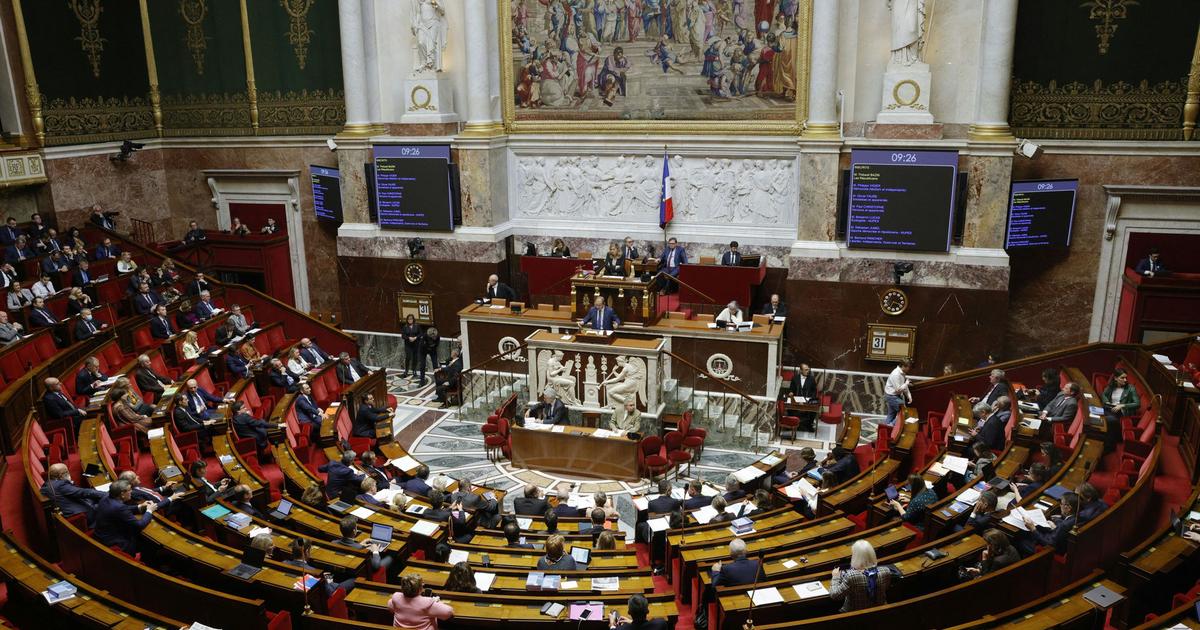All it took was one election for our relationship to institutions to be profoundly turned upside down.
The National Assembly has become the nerve center of French political life.
Never in the history of the Fifth Republic have divisions been so marked at the Palais-Bourbon.
It is the great return of the quest for compromise for the majority and its task is made very delicate by the very strong push of the extremes.
Read alsoMotion of censorship, 49.3, dissolution… glossary of future theaters of tension in the Assembly
The LFI deputies intend to strike back at the executive.
When the new government spokesperson Olivier Véran confirmed that the Prime Minister will not seek the confidence of Parliament following her general policy speech to be held on Wednesday, they immediately announced the filing on the same day of a motion of censure against him.
Spontaneous or provoked movement?
The 1958 Constitution, in its article 49, provides for two types of motion: the spontaneous or offensive motion, defined in paragraph 2. It is tabled on the initiative of a group of parliamentarians wishing to overthrow the government.
And then the motion of provoked censure, defined in paragraph 3, which allows the government to engage its responsibility when voting on a text which is then not the subject of any debate in the Assembly.
The famous "49.3", well known to the French.
The deposition of draft evaders falls under the first hypothesis.
“It is a very simple tool to understand, assures the constitutionalist Didier Maus.
The text entitled
Motion of censure
must be signed by at least 58 deputies, which will not pose the slightest problem for LFI deputies.
Each deputy is prohibited from signing more than three motions of censure during the ordinary session.
How many motions of censure have been tabled?
Since the entry into force of the 1958 Constitution, no less than 58 motions of censure have been tabled.
The various governments have not all been housed in the same boat.
Georges Pompidou, Raymond Barre and Pierre Mauroy were the Prime Ministers who had to face the most motions during their mandate, seven each precisely.
More recently, Jean Castex was spared during his time at Matignon, while Édouard Philippe was the target of a motion from the Republicans and two motions from the left, without ever representing the slightest danger.
The case of Manuel Valls is undoubtedly more striking.
The motion of censure against his government did not obtain the necessary number of signatures, close to two.
But it had been initiated by slingers of its own majority.
Only one instance of a voted motion in history
Once the deposit has been made, a deadline of 48 hours must be respected before the vote is put in the hemicycle.
“It's a rule that was originally thought to give the government time to find a few extra friends to avoid being overthrown.
It doesn't really matter today, but it's a rule that must be maintained.
»
Then comes the vote.
Only “for” ballots are counted.
If the absolute majority of deputies, ie 289 deputies, vote for the motion of censure, then the government must submit its resignation to the President of the Republic, who is not required to accept it.
“This is what happened on the night of October 4 to 5, 1962, recalls Didier Maus.
The motion of censure had been voted against the government of Georges Pompidou.
De Gaulle refused the resignation of the executive and immediately dissolved the National Assembly.
It was good for him, since he had then won the next legislative elections hands down.
The fall of the Pompidou government in 1962: the only motion of censure that hit the mark pic.twitter.com/SkOjyv89bW
— Ina.fr (@Inafr_officiel) December 12, 2018
This is the only example of a motion of censure adopted under the Fifth Republic.
This shows the extent to which this tool is above all symbolic in nature.
"In the case of the Insoumis, it's a shot in the dark," comments Didier Maus.
They know perfectly well that she has no chance of being adopted.
But the political message is very strong.
They position themselves as the first opponents and set a date for the future.
»
For our specialist, “it remains very difficult to reproach a government which has not yet done anything what it has done.
This motion resembles an act of anticipation, to "reproach the government for what it is and what it embodies."
This is also the reason why the figures of the Les Républicains Party have dissociated themselves this morning from any support for this motion.
And why the elected members of the National Rally, so committed to their quest for respectability, are heading straight for abstention.
It is finally on the side of Nupes that the results of this motion will be interesting to analyze.




/cloudfront-eu-central-1.images.arcpublishing.com/prisa/MGKJOHC63JHPJC3KMZ2NN2QO6M.jpg)




